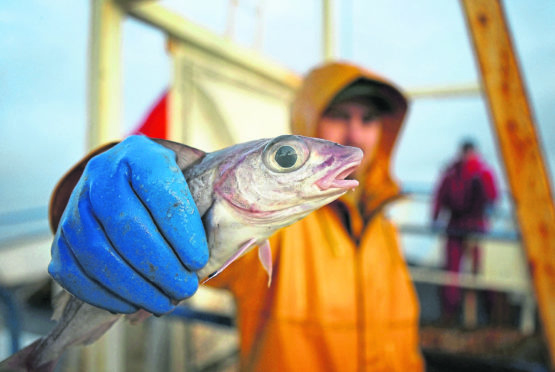Fears are growing that Scotland’s fishing fleet may face a Brexit-fuelled EU backlash at end of year quota talks.
Concerns have been stoked by coastal state discussions that have already taken place between the EU and non-EU fishing nations as part of the annual quota-setting process.
These negotiations were “particularly difficult” in terms of how the UK’s fishing interests were treated, one industry source said.
>> Keep up to date with the latest news with The P&J newsletter
Further discussions leading up to and during the EU’s December Fisheries Council in Brussels – when catch limits will be set for 2019 – are likely to follow in the same fashion, he warned.
Fisheries Secretary Fergus Ewing is also expecting Brexit to limit what can be achieved in the coming weeks.
“Negotiation dynamics are likely to be different this year, given this wider political landscape,” Mr Ewing told guests at a recent industry gathering in Edinburgh.
Brexit “may make things more difficult” but it could also give the UK some extra leverage with partners looking for stability in the event of a “no deal”, he added.
Yesterday, the Scottish Fishermen’s Federation (SFF) said a backlash would be counterproductive for other EU nations wanting to fish British waters.
SFF chief executive Bertie Armstrong added: “If EU nations want continued access, any attempt at punitive action now would simply backfire for them later.”
Scottish White Fish Producers’ Association chief executive Mike Park said: “We expect these talks to be as fraught as last year, when there was an obvious negative reaction by the commission and member states to the UK leaving the club.”
Mr Park said fishers were also becoming increasingly concerned about “the level of foreign effort” in Scottish waters, especially around Shetland.
He added: “The level of Danish, Norwegian and Spanish-owned, UK -registered vessels has reached worrying levels.
Industry chiefs south of the border have previously warned that fishing “wars” could reignite following Brexit.
In August, rocks and smoke bombs were launched by more than 30 French vessels towards five British boats off the coast of Normandy in a protest over access rights for valuable scallop fisheries.
Scottish fishers are already facing huge cuts to their cod and haddock quotas next year – if an influential group of marine scientists get their way.
Earlier this year, the International Council for the Exploration of the Seas (Ices), which advises the European Commission on the health of stocks, proposed a 47% cut to the total allowable catch (TAC) limit for North Sea cod.
Ices also wants cuts made in haddock, plaice, whiting and saithe TAC and – potentially the most damaging proposal – a 70% cut in north-east Atlantic mackerel.
It is Scotland’s most valuable fish stock and was worth £162 million, or 29% of the total catch by value for the country’s fleet last year.
